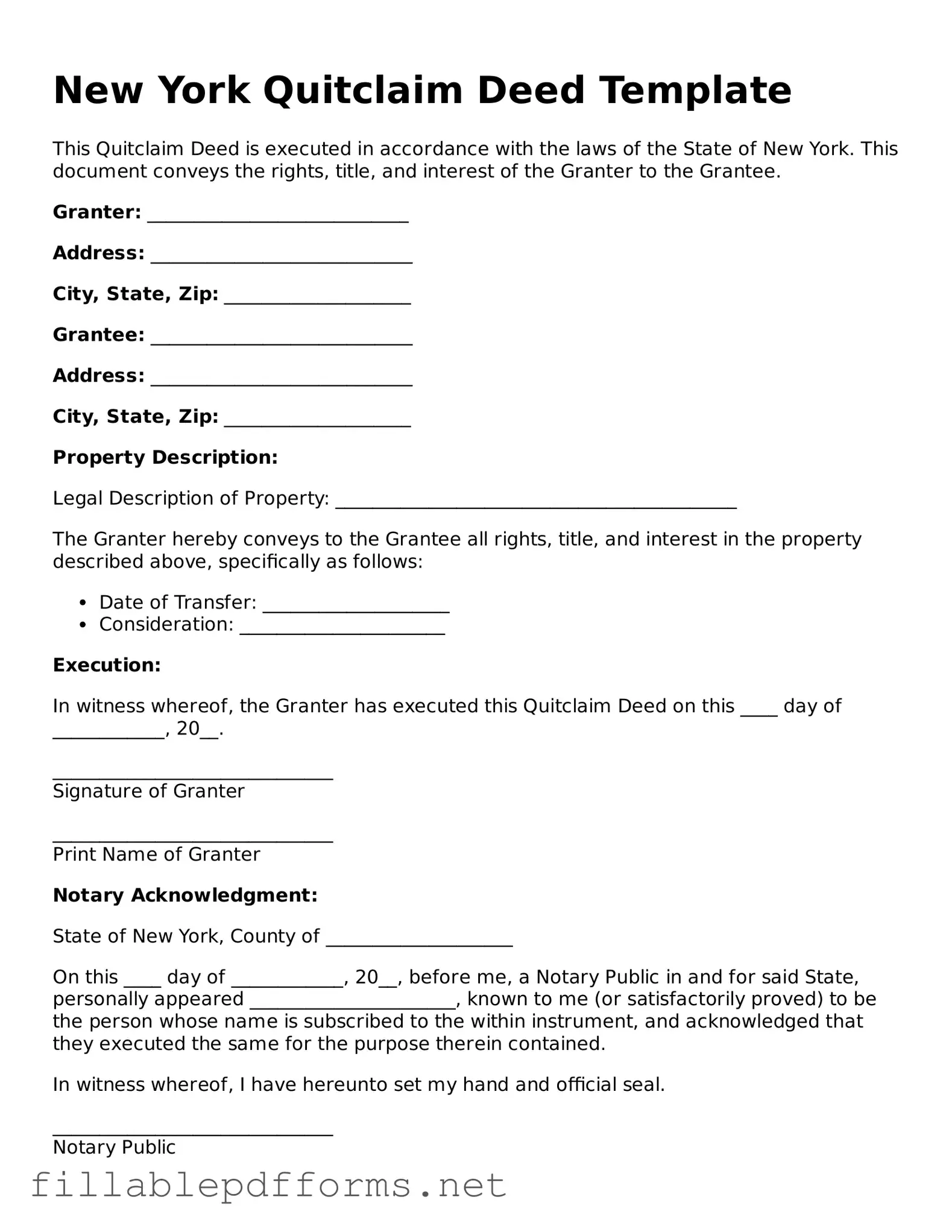When navigating the complexities of property transfer in New York, understanding the Quitclaim Deed form is essential. This legal document serves as a tool for transferring ownership of real estate, allowing one party, known as the grantor, to convey their interest in a property to another party, referred to as the grantee. Unlike other types of deeds, the Quitclaim Deed does not guarantee that the grantor holds a clear title; instead, it simply transfers whatever interest the grantor may have, if any. This makes it particularly useful in situations such as transferring property between family members, resolving disputes, or clearing up title issues. The form requires specific information, including the names of both parties, a legal description of the property, and the signature of the grantor, often necessitating notarization to ensure its validity. Furthermore, while the Quitclaim Deed is straightforward, it is crucial for both parties to fully understand the implications of the transfer, as it can have lasting effects on property rights and responsibilities.
